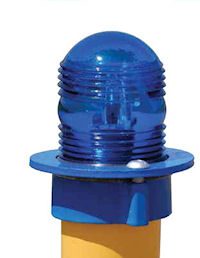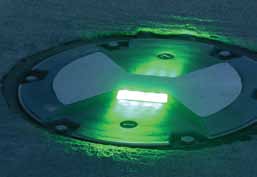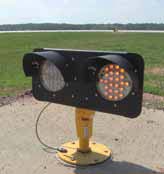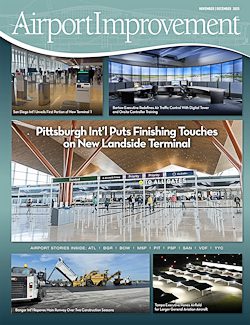 |
|
Facts & Figures Project: LED Airfield Lighting Conversion Location: Raleigh-Durham (NC) International Airport Cost: $20 million (including about $5 million for runway rehabilitation) Approximate Cost Savings: $400,000/year Funding: FAA AIP Funds, ARRA Stimulus Funds, NC State Grant Phase 1 General Contractor: Rifenburg Construction Phase 2 General Contractor: Barnes & Powell Electrical Design & Engineering Consultant: Delta Airport Consultants Electrical Products Supplier: ADB Airfield Solutions Project Details: 3,200 quartz bulbs and 229 signs were converted to LEDs; new transformers and several hundred thousand feet of cable were installed |
“The FAA wasn’t very happy with us,” recalls Steve Pittman, deputy airport director of Facilities, Engineering and Maintenance. “They didn’t demand that we upgrade our lighting system, but they did suggest we do something about our signage lighting.”
Let There Be Light
RDU took the hint and initiated a $20 million project to convert its incandescent airfield lighting system to LED technology. Over the last two+ years, roughly 230 signs and 3,200 bulbs were changed – everything from taxiway edge and centerline lighting to runway centerline lights, obstruction lights, touchdown zone lights, runway end identifier lights, and elevated and in-pavement guard lights. The only units not converted were runway edge lights, which the FAA has not yet approved for LED installation.
New transformers and several hundred thousand feet of new cable were also installed. High-tech electrical vaults with switchgear constant current regulators power the entire system.
Controlling and monitoring the system on the airport’s IT network was “a bold move” because the FAA hadn’t previously allowed it, notes Pittman. “While we wanted to be very careful because airfield lighting is a life safety issue, we were able to demonstrate the reliability of a closed circuit system that rode on our IT network. The FAA realized there weren’t a lot of reasons not to do it,” he explains.
“As a result, we were able to save money on fiber cable installation.”
RDU is one of the first airports to install LED runway centerline lights and touchdown zone lights – products that have been approved by the FAA in recent months. RDU is putting them in on both runways.
Galen Dixon, regional sales manager for electrical product supplier ADB Airfield Solutions, considers RDU a showcase of new lighting technology. “They gutted their electrical system and installed a whole new high-tech system,” Dixon explains. “They not only installed new technology, they went after newer versions of new technology. Everything that can be LED is LED. It’s an amazing look at night.”
Why Change?

With the former incandescent lighting system, RDU maintenance crews were replacing bulbs twice a year per fixture. Operations crews were constantly checking the airfield for burned out lights.
There were operational consequences as well. Airfield pavement sections had to be closed when bulbs were replaced. Electrical circuits were tied together in haphazard and confusing ways, which made maintenance time-consuming and costly.
When airport management realized that the entire electrical system, from cables to fixtures to controls, needed replacing, it decided to build for the future.
 |
Subsequent analysis showed that moving from incandescent lighting to LEDs would save approximately $400,000 per year in energy and maintenance costs (including labor and parts). With AIP funds covering 75% of Phase One and North Carolina state funds and federal stimulus funds combining for Phase Two, Delta determined that maintenance savings alone would recoup the airport’s portion of the project in 18 months.
 |  |
The changeover is paying dividends in terms of staffing as well. Pre-LED, the airport had to have two electrical technicians on the airfield throughout the night. “Now,” Pittman reports, “we’re able to move them to other jobs.”
Making the Commitment


Phase One, which ran from spring 2008 to spring 2009, included milling and overlaying the asphalt on the east side runway, replacing the electrical infrastructure and installing new LED lighting. Phase Two, which installed new lighting and infrastructure on the airport’s west side, broke ground in summer 2009 and is expected to end in September.
 |
Pittman explains RDU’s move to LEDs this way: “While we don’t mind being on the cutting edge of something, we certainly don’t want to be on the bleeding edge. But we studied this technology thoroughly. Once we decided to go with LED, we couldn’t get enough of them.”
The airport even has a change order ready to execute for the purchase of medium-intensity LED runway edge lights for its general aviation runway, pending FAA approval of their use. It also plans to install high-intensity runway edge lighting when it is approved.


